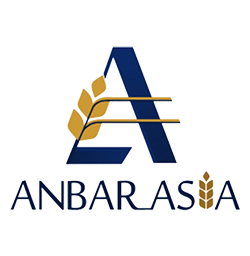Saudi Arabia’s cement industry reflects a dynamic yet challenging landscape characterized by strong domestic growth and significant strategic considerations within the context of the country’s ongoing economic transformation. The Saudi Vision 2030 initiative is markedly influencing this sector by driving ambitious infrastructure projects such as NEOM and The Red Sea Project, which are set to considerably bolster demand for construction materials in the coming years. Despite such promising demand projections, the Saudi cement industry currently contends with an entrenched oversupply problem compounded by production outpacing domestic needs, leading to under-utilization of capacity across the sector.
In the fourth quarter of 2024, cement sales in Saudi Arabia experienced a considerable year-on-year increase of 12.33%, hitting 14.87 million tonnes, with domestic demand accounting for 96% of these sales. For the entire year, sales grew by a more moderate 3.67%, reaching a total of 51.15 million tonnes. This solid growth underscores a domestic market heavily reliant on infrastructural expansions. However, analysts highlight a sharp contrast between current sales and the anticipated demands of forthcoming megaprojects, which could push annual demand as high as 78 million tonnes. These projections present opportunities for cement producers, albeit accompanied by the risks associated with market saturation and the need for careful capacity management.
The distribution of market shares among cement producers also demonstrates competitive dynamics within the sector. Al-Yamama Cement emerged as a market leader, capturing 12.84% of sales with a notable year-over-year increase of 22% to 1.83 million tonnes. Qassim Cement follows closely, buoyed by its acquisition of Hail Cement Company, obtaining an 11.43% market share. Smaller firms like Al Jawf Cement have also shown impressive growth, evidenced by a 38% jump in sales, although from a smaller base.
On the export side, while domestic sales flourish, export activities reveal volatility. Saudi Cement leads with a commanding 80.10% of export volume in the fourth quarter, experiencing a substantial 71% increase in shipments. Yet, clinker exports overall declined by 28% due to an oversupply and mismatched demand. The clinker production segment, with a 7% increase in output and rising inventories, underscores these imbalances.
Fuel costs represent another significant challenge, particularly for clinker production, where high energy consumption elevates vulnerability to global energy price swings. Producers are encouraged to adjust prices within regulatory limits to offset these increments. However, fierce competition and a saturated market complicate such maneuvers, emphasizing the need for diverse strategies.
Strategies to tackle these challenges include expanding export markets, particularly into Africa and Asia, and exploring innovative applications of clinker in niche sectors. Aligning production with foreseeable demand is crucial to mitigate unnecessary inventory build-up, as is collaborating more closely with megaproject developers to create a more predictable demand outlook. Emphasizing operational efficiency in light of rising costs, alongside leveraging governmental support for green technology adoption, will be key to maintaining competitive advantage.
Parallel to these industrial dynamics, Saudi Arabia’s broader economic reforms under Vision 2030 highlight significant progress, with increased private investments and enhanced government efficiency contributing to economic resilience. The energy sector transition, particularly the move towards natural gas and reduced reliance on crude oil, aligns with global sustainability trends and reflects strategic positioning within global markets. These efforts illustrate the Kingdom’s commitment to a diversified and sustainable economic framework.
For stakeholders in global trade, these developments suggest a market of both challenges and opportunities. Understanding the interplay between domestic economic policies, global market trends, and the Kingdom’s ambitious vision is essential in navigating the evolving landscape. Importers, exporters, and investors need to stay attuned to these shifts to capitalize on the emerging opportunities presented by Saudi Arabia’s economic transformation.






